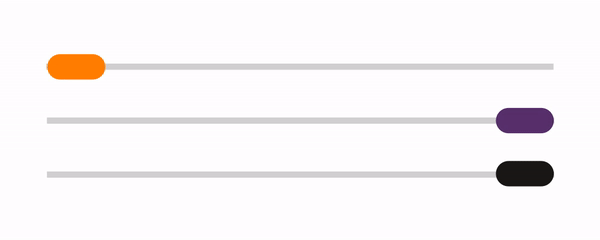Automated Scheduling / Solving Worktime Optimization With Operations Research
If data scientists try hard enough, everything can be measured in terms of parameters. In the workplace, we quickly apply these principles to know processes that be automated based on those parameters.
One area that doesn’t always get considered is human resources.
Perhaps it’s because we don’t consider employees to be piles of data, but there’s at least one area where this isn’t true: automatic scheduling.
What is Automated Scheduling?
Automated scheduling solutions are designed to optimize workplan schedules, typically in regards to employee shifts and such areas of business. They enable companies to adapt to changes in schedules, such as accounting for urgent changes in the roster or to changes in workload demands.
They can range from simple solutions that ensure there are no redundancies to advanced AI-powered tools that automatically cater to wider needs and impacts.

However, while that sounds easy, most out-of-the-box solutions generally fail to meet the specific needs of a given company. That is because they target the known variables and, while these are the common denominators most workforces have, they fail to adapt to specific niche cases that ultimately impact company goals.
What is Operations Research?
Operations research is a method for solving problems and through analytical mathematics. This is achieved by breaking problems down into their most simplest components and building mathematical models around these, in order to test different solutions.

Operations research (OR) technology refers to the technology that achieves this and it is often found alongside Artificial Intelligence and Machine Learning, as the latter two both also work by testing different models to find the best solution.
The Problems of Work Time Organization
So what challenges is a automated scheduling system meant to solve? From the start, there are many factors that middle managers need to consider:
- Regulations. Every country has strict rules and regulations over daily, weekly and monthly working hours. For example, in both the UK, DACH and Poland, employees must have a minimum of 11 hour’s break between shifts, and must have one full day off a week. In specific sectors, such as air traffic control for example, even stringent regulations can also be in place.
- The full process. Missing a single employee might not seem like much, but if they play a vital role between other team members or departments, the entire process can become problematic.
- Emergencies. Things happen. When employees take sudden leave, managers need to find a suitable replacement that still fits the criteria (regulations and their place in the process) described above.
- Efficiency. Of course, every manager wants a process to be as efficient as possible. Even the smallest delays have knock-on consequences. An unavailable driver translates into late or missed orders, which then costs the company money.
Okay, So Give Me an Example?
We can also apply these situations at a larger scale. A good example here would be a logistics company, which often has a very diverse and varied environment. Such a company needs to schedule not only their drivers, but also loaders, maintenance and other staff.
Each has its own separate criteria and regulations, but there are clear connections and ripples whenever something changes.
A lack of drivers results in delayed deliveries, while giving inexperienced drivers the most challenging routes can also risk the same outcome. Likewise, having drivers but understaffing on cargo loaders can similarly slow down efficiency. Mathematically, we can express these all as complex algorithms that are beyond the reasonable comprehension of anyone’s quick thinking.
Sounds interesting for your business? Let us know!
Using OR in an Automated Shift Scheduler
All of the above can be expressed mathematically. For this, OR technology is the best solution, as it can be automated to think faster than the human brain. After all, the goal is to optimize work while saving managers’ time.
In OR, there are two main factors to consider: boundaries and the goal. Boundaries refer to any limiting factor, while the goal is the specific purpose or desired outcome.
For instance, we can program the following requirements in an automated scheduling system as boundaries:
- Process impact. For example, if we’re talking about a supermarket, such an automated scheduler will minimize the risk of long queues under set boundary conditions.
- Legal compliance. Time between shifts, work breaks and other factors can all be expressed mathematically and set as immutable rules within any developed model.
As for goals, this depends on the priorities of the company.
- Minimum labor cost. In order to be cost effective, managers need a minimal team, as few companies can afford wasted expenditure on backup workers.
- Fulfilment. For example, logistics companies may prioritize order fulfilment over all other metrics.
- Anticipation. Perhaps the company simply wants to predict (more on that in a second) increases and decreases in demand, scheduling work shifts and priorities accordingly.
Predicting the Future
Alongside immediate needs, part of a middle manager’s job is to think about the future and avoid potential risks. With work schedules, this includes the impact of tired workers, demotivational outcomes of working too much, penalties for missed deadlines and more – all while anticipating and adapting to demand.
Strictly speaking, operations research is based on applied hypothesis, tested over time for direct data. What it can’t do is predict the future. While nothing can, there is fortunately a method that offers results that are accurate enough to work with: time series regression.
A whole different area of data science, time series regression can be best expressed as making predictions based on historical data. By using key time stamps – whether it's per year or even per time of day – we can built predictive modelling. For example, retailers would like to know:
- Which hours see the most customers
- What time of year certain products sell the most – and on which days
- How behaviors change with the seasons
Let's schedule a free Automated Scheduling consultation!
This can be further adapted based on additional information, such as the weather, consumer confidence index (CGI) or consumer wealth index (CWI). For example, we can learn that customer activity is typically high on Friday evenings… unless it's raining, in which case they do not venture out.
Businesses, in turn, can use this to anticipate needs and feed this into their automated schedule planner.
How to build an Automated Scheduling System
At the start, we mentioned mass-sold solutions fail to meet these finer needs so, what’s the alternative. For the best automating scheduling, both operations research and time series regression methodologies are required, not to mention any advanced machine learning support.
And from the business itself? Data. What information is recorded – or can be recorded – and later used? And what are the main objectives and priorities? Even the best data team will need these to translate into the aforementioned boundaries and goals.
Since these first two represent two very different areas of data science, it’s not so easy for companies to implement in-house or through quick and easy means.
While that sounds like sales pitch, it’s an unfortunate truth that operations research, time series regression, machine learning and other advanced data solutions are not simple to implement, but they readily accrue benefits back in terms of money saved, risks avoided and overall operational efficiency.
Automated Scheduling: The First Step to Making The Most of Data
A system that learns from itself 24/7 will continue to expand and improve as time goes on, increasing the rewards. At the same time, this frees up management layers to focus on other areas, rather than trying to figure out such complex calculations for themselves.
So, how can you build an automated scheduling system? Unless you’re in the data business, it’s best to bring in dedicated data scientists. After all, if you want such a system, it’s best to start with people who see the world through formula and algorithms anyway.








